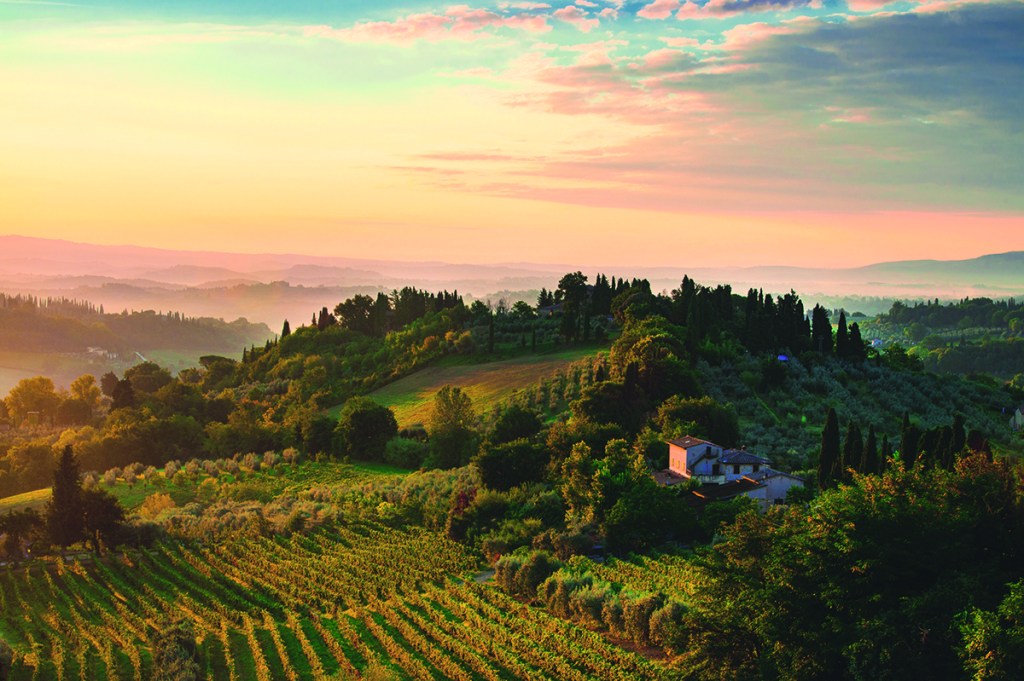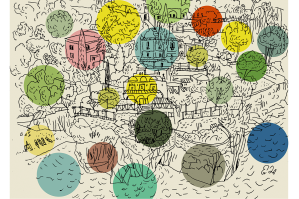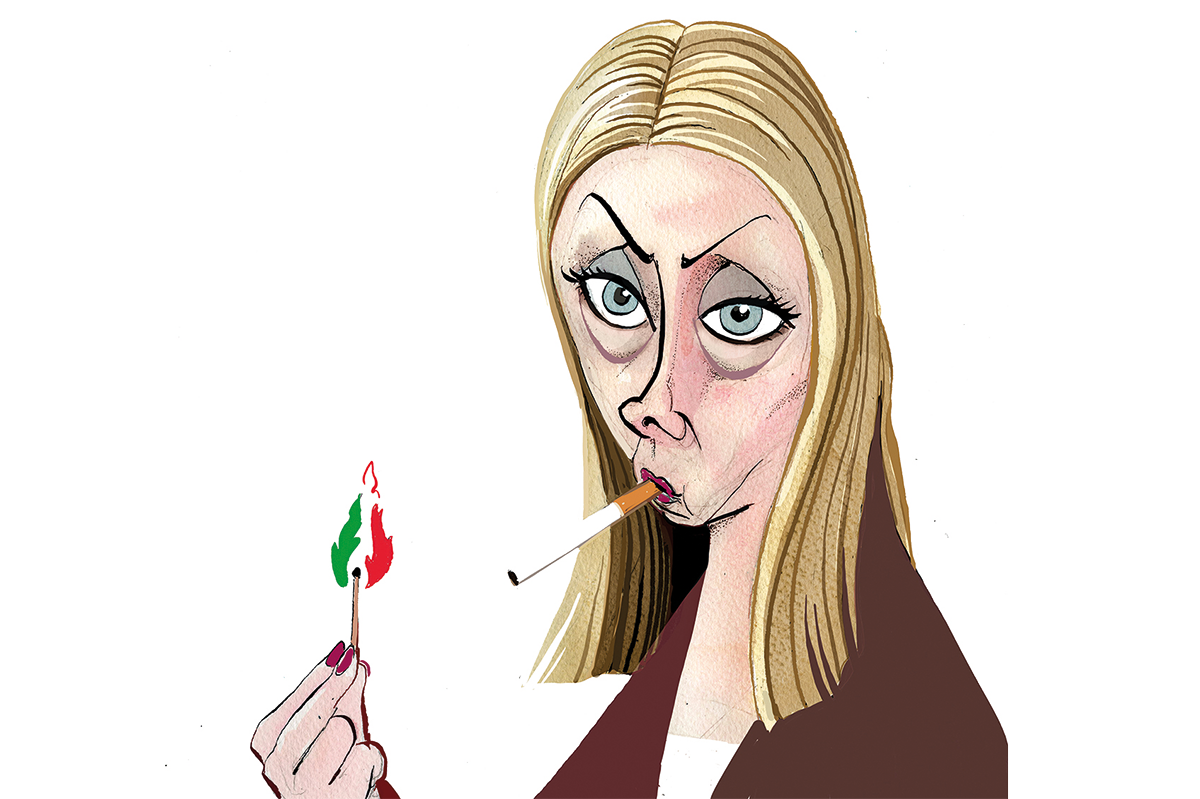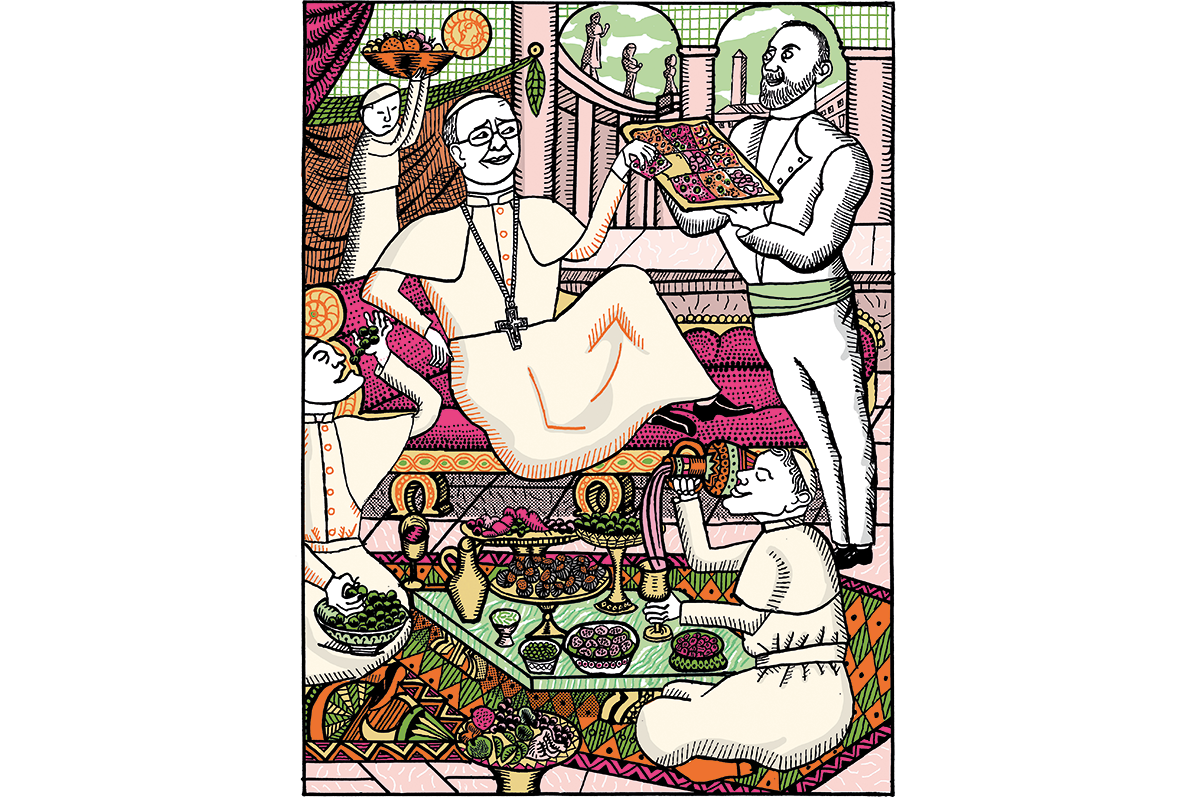A family of peacocks is sunning itself in our villa garden. They all look extraordinarily happy and composed, especially the baby one for whom (like us, come to think of it) this is a whole new experience. But then, the 150 hens wandering in and out of their coops painted like beach huts don’t look exactly overburdened themselves. Nor do the sheep, pigs and cows in their 220 acres of lush Tuscan terrain near the Merse river.
I can’t detect much discontent on the faces of the 60 staff either, here at Borgo Santo Pietro, about 45 minutes southwest of Siena, whether the serene but remarkably strong young women in the spa with its outdoor treatment beds; the British florist; the American artist-in-residence; or the 15 gardeners who busy themselves in the herbaceous borders, rose-scented pathways and immaculate lawns.
‘We think it has always been a happy place,’ says the Danish owner Claus Thottrup, who, with his wife Jeanette, came across what was a derelict 13th-century pile in 2001 and set about bringing it back to life in magnificent fashion.
In the Middle Ages, the place was a popular stopping place for pilgrims, and frankly, I have seldom stayed anywhere so special. My favorite hotel group is the heinously expensive Aman, and there’s a touch of the same Zen spirit here, with only 20 rooms and an enlightened philosophy that somehow brings guests and staff together to make a powerful whole.
And if the farm-to-plate movement sometimes speaks noisily of its achievements, Borgo Santo Pietro goes about its business quietly, producing almost everything eaten in its two restaurants. One of them, Meo Modo, recently gained a Michelin star without being remotely pompous. The Thottrups have always loved Provence, and that comes through. But so, too, does their passion for Italy and their inclination to Scandi unfussiness.
Our villa suite has front and back gardens, fires inside and out, a vast French chandelier, vaulted ceilings, antique mirrors and a bathroom with a sofa and a freestanding tub looking out at the walled patio. There’s also a painting on the wall of a lost soul. She is strangely beautiful in her loneliness, and I ask the general manager — who happens to be from Glasgow, so her Italian-Scottish accent is a treat — if I might buy it. ‘We’ll get back to you on that one,’ she says politely. Which can only mean: ‘I doubt you can afford it.’
Tuscany or Provence? It’s the former for me every time. I spent five months in Naples in my twenties and came to love the fragility of Italians: the hearts on sleeves, the chaos. I’ve always thought that if you were imprisoned in Italy, you would soon make a friend of your guards and be given special treatment.
We’re here for only a couple of nights as part of a road trip through Tuscany, but within hours some of the staff are calling me Signor Marco with a dash of irony. I like that.
‘Signor Marco, what shall we get you to drink this evening?’ the barman asks.
‘I would like the best drink in the world…’
‘Then I makey you a Negroni.’
Bullseye! My friend Richard and I are meant to be writing a book about the Negroni. Last year was the hundredth anniversary of the invention of this divine concoction by Count Negroni in a Florentine bar. Unfortunately, we’ve missed the peg and haven’t yet written a word, but the barman seems impressed as I bang on about the merits of various vermouths in making a superlative Negroni, and how only three people in the world know what’s in Campari — and only two people know who those three are.
***
A print and digital subscription to The Spectator is just $7.99 a month
***
The big hitters of Florence, Siena and San Gimignano are all in striking distance of Borgo Santo Pietro, but, as my grandmother used to say: ‘My dear, the crowds!’ So we are just as happy pottering in nearby little hilltop towns such as Chiusdino, where there are as many churches as bars and an espresso costs a euro.
As it happens, Claus and Jeanette are in residence during our stay. I have a good old natter with Claus and pretend I understand the finances of running a hotel. My wife Joanna is invited by Jeanette to visit her shop in the next-door hamlet of Palazzetto. She returns with all kinds of lotions and potions created from natural ingredients sourced from the farm.
On our last night, we hope to eat outside in a little spot by an open fire. But some honeymooners have gotten there first. They are from Dublin — and look blissfully happy. I suggest that they should make a point of returning here as often as possible during their married life. ‘That would be amazing,’ says the blushing bride.
This article is in The Spectator’s August 2020 US edition.

























